Iceland: How much things cost & how to visit on a low budget
Since its currency crash in 2008, Iceland had gone from absurdly expensive to somewhat reasonable in cost, and that has prompted thousands of new tourists to stream in to see what all the fuss is about. It’s hard to find a visitor to Iceland who didn’t absolutely love the place, but you won’t find anyone who tells you it’s cheap, so planning ahead is essential. Prices have continued to creep up in 2015 and 2016, so it’s again among the most expensive European destinations.
Many visitors arrive on an Iceland stopover going between North America and Europe, but with very cheap flights to and from Europe it’s becoming popular for adventurous types from all over the continent. In 2013 I spent 9 days in the country, always checking for prices and the cheapest ways of doing things, so below I can lay out how to budget and what to do to keep costs down.
Note: This article was first written in late 2013, but all prices have been updated as of December 2016 to be current through 2017.
Reykjavik vs. the rest of Iceland: Where to go
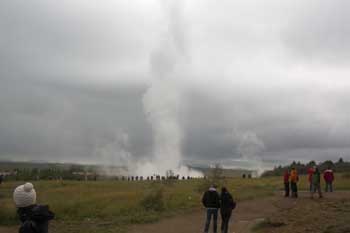
If you have one night or a few nights you are better off taking a bus or renting a car directly from the airport and heading east along the southern coast for some of the country’s best sights. If you have at least a week you’ll want to rent a car and do a lap around Iceland’s famous Ring Road, allowing you to see nearly everything the country has to offer in a neat and organized way.
Iceland accommodation: Hostels, guesthouses, and hotels
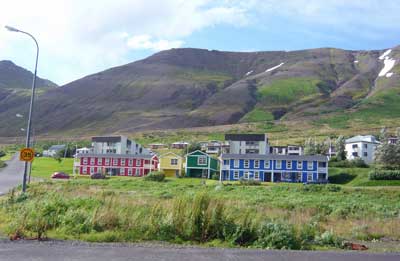
The most common form of accommodation in Iceland is a guesthouse and hostel combination which will have a mix of private rooms and dorm rooms, with shared bathrooms in down the hall. Most of them have fully equipped shared kitchens, so self-catering is at least as popular as eating out while exploring Iceland outside of Reykjavik.
High season (June through August) typical accommodation prices
All prices quoted in US dollars at a rate of about 110 Krona to US$1 in December, 2016.
- Hostel dorm bed: US$34 to US$58
- Single private with shared bathroom: US$85 to US$135
- Double private with shared bathroom: US$118 to US$140
- Double private with en-suite: US$130 to US$320 (and up)
Prices in Reykjavik are a bit higher than elsewhere in the country, but not by much. Prices in the off season are about 30% lower than in high season, but in the slowest months many places close so rates never go much lower than this.
Most Iceland guesthouses are NOT on the normal hotel-booking sites
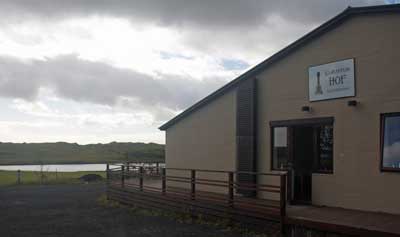
The good news is that when you get to Iceland, the tourism office will give you a directory of almost every guesthouse on the island, and there are other ways of finding these guesthouses and other informal accommodations. Even as of late 2016 you should be able to book a double room (with shared bathroom) for about US$120 per night in most towns in Iceland. If you do a hotel search you might see prices that are double that, but those are in the few formal hotels with 24-hour lobbies and such.
Increasingly, Airbnb and other online rental sites are the best place to find guesthouse accommodation in Iceland. As of only a few years ago, most places would be booked by phone or in person on arrival day, but now more and more places can be pre-booked, at reasonable prices.
Sleeping bag accommodation in Iceland
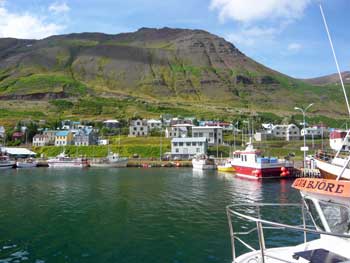
In a ‘sleeping bag accommodation’ (as it’s known in Iceland) you’ll get a bed with a mattress and often a pillow. So with even a cheap indoor sleeping bag, you’ll be comfortable and warm while saving quite a bit of money. For those renting cars, this is a highly recommended strategy.
You can rent sleeping bags in Reykjavik starting at around €12 per week.
Most Iceland attractions are free (the good news)
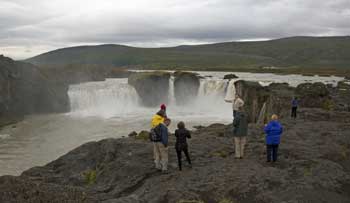
So to see all the glaciers and waterfalls and volcanic beds and other scenic attractions, it’s all free of charge with no admission cost or even parking fees. The larger attractions also have visitor centers where you can get local advice for free as well.
Iceland transportation: Rental cars and buses
Even as a lifetime public transportation fan, I’m very glad I gave in and rented a car to tour Iceland, even as a solo traveler. For the most part the roads are in perfect condition and virtually empty even in high season, so driving couldn’t be easier. Also, the country has stunning vistas every time you turn a corner, so being able to stop in the middle of the road even if there is no room to pullover, is critical.
The buses are modern but also expensive and running on very limited schedules. If you only have enough time to cover the main sights along the southern coast you might buy one of the bus passports that allows you to hop on and hop off, though a rental car is still much better and easier.
Rental cars in Iceland: What you need to know
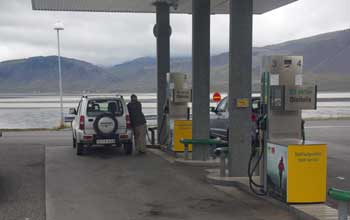
For an extra fee you can pay to reduce that deductible to almost nothing, but the more popular add-on is the Gravel and Glass insurance. For around €10 per day with this coverage you have a zero deductible if the vehicle gets damaged by gravel or if any glass gets broken by flying rocks (or anything else). Unfortunately, many of Iceland’s side roads and even a few of the main roads are covered in gravel, and if you drive at anything above a crawl, there will be some gravel flying around.
Personally, I normally decline add-ons like this but in this case I bought the Gravel coverage after reading a few horror stories in online reviews. I didn’t get any damage that I’m aware of, but the peace of mind was worth a LOT when driving on isolated gravel roads so I wasn’t petrified that I was chewing up the paint job just trying to stay safe on the roads.
Rental cars in Iceland
- 2-wheel drive compact (manual): US$230 per week and up plus add-ons
- 2-wheel drive compact (automatic): US$270 per week and up plus add-ons
- 2-wheel drive mid-size: US$450 per week and up plus add-ons
- 4-wheel drive van or SUV (automatic): US$650 per week and up plus add-ons
Daily rates are about 20% as much as weekly rates, so 5, 6, or 7 days cost the same.
Add-ons
Gravel coverage: US$10/day
GPS (highly recommended): US$10/day
Additional collision waiver: US$10/day
Fuel prices in Iceland
Every gas station in the country has the same prices, which don’t seem to change much. As of December 2016, a liter of petrol is 194 Krona, which is about US$1.75 or €1.63, or about US$7.50 per gallon.
Bus pass prices in Iceland
For a quick day trip from the airport to some local sights you can spend as little as US$90 per person, but for the longer distance buses you’ll spend at least US$130 to US$250 depending on length of time in order to hop on and hop off.
A Ring Road passport will cost around US$400 per person, so for two people it’s no cheaper than renting a car, even after fuel is taken into account, and for 3 or 4 people it’s definitely cheaper renting a car.
Food prices in Iceland
Here’s the thing: sit-down restaurants in Iceland are very expensive by international standards, so there aren’t very many of them. Obviously Reykjavik has many restaurant choices but most smaller towns might have only a few at most. The good news for budget travelers is that fast-food options are more plentiful, and self-catering is even cheaper and easier.
Restaurant prices in Iceland
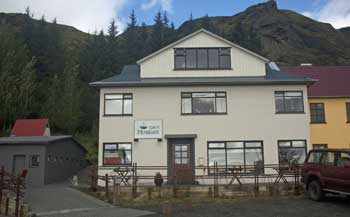
A soft drink, coffee, tea, or even bottled water will generally be between US$3 and US$5 in a restaurant. A pint of beer will typically start at around US$7 at even the cheapest places, while wine and spirits cost even more.
Fast food prices in Iceland
In Reykjavik and larger towns (which might only have 2,000 residents) you’ll have many fast food options including Subway, Quiznos, and usually a few local burger or hot dog places. Prices for a sandwich at Subway are about US$6 for a 6-inch and US$10 for a foot-long, so they aren’t too much higher than elsewhere in Europe, and are sure cheaper than proper restaurants.
More good news for drivers is that many gas stations around the country have fast food restaurants built in, so it’s fast and easy to pick up a sandwich or hot dog by the side of the road.
Hotel breakfast prices in Iceland
Many hotels and guesthouses in Iceland serve breakfast, but it’s almost always at an extra fee, and many don’t serve anything at all. If a breakfast is offered it will typically cost between US$12 and US$15 for a buffet of cereals, bread, cold cuts, cheeses, hard boiled eggs, juices, coffee and tea, and perhaps some pastries.
Making your own self-catering breakfast will be cheaper, but since you can stuff yourself for a flat fee at the breakfast buffets it might be worth it to save yourself the hassle of shopping the day before and making breakfast in the morning.
Self-catering in Iceland
The best budget tip for Iceland is to buy and prepare your own food, and you can literally do it for all three meals per day if you prefer. Since Iceland has almost no national “must-try” dishes, you can buy and prepare your own food without worry about missing anything meaningful.
Nearly every guesthouse in Iceland has a shared kitchen where at least half the guests will be storing and preparing breakfasts and even dinners. They have refrigerators, coffee makers, electric kettles, pots, pans, dishes, and silverware, as well as salt and other spices, so you can buy just the food and you’ll be able to prepare it all.
Supermarket prices in Iceland

For example, you can buy a 400 gram (1 pound) block of Havarti cheese for around US$5, but a similar looking cheese right next to it on the shelf might be US$15 for the same amount. The same is true for lunch meats. Sliced ham can be US$3 for enough to make 2 sandwiches, but sliced roast beef might be US$10 for the same amount.
Some sample prices in the cheaper Iceland supermarkets
- Sliced white bread: US$1.70 per large loaf
- Fresh baguette: US$1.50 to US$2 each
- Hot dog buns: US$2.50 for 5
- Pork hot dogs: US$3.50 for 5 large hot dogs
- Cheap Havarti or other local cheese: US$5 for 400 grams (1 pound)
- Imported cheese: US$10 to 15 for 400 grams (1 pound)
- Sliced ham for sandwiches: US$5 for 400 grams (1 pound)
- Sliced roast beef for sandwiches: US$12 for 400 grams (1 pound)
- Pasta: US$1.50 for .5 kilogram (1.1 pounds)
- Pasta sauce: US$3 for a .5 liter jar
- Ground beef: US$5 for .25 kilos (half pound)
- Bake-at-home pizza: US$5 to US$7 for one person
- Bag of tortilla chips for 2 or 3 people: US$2
- Jar of salsa for those chips: US$3
- Breakfast cereal: US$3 to US$5 per box
The prices above are for many of the cheaper and more common things that budget tourists buy in Iceland. As mentioned above, if you want something exotic and imported, it might cost double or triple what you pay at home, if you can find it at all.
Alcohol prices in Iceland
In restaurants and bars throughout the country you’ll pay at least US$8 for a pint of beer, and at least US$10 for a glass of wine or a simple cocktail. If it’s a fancy place you’ll pay even more, of course.
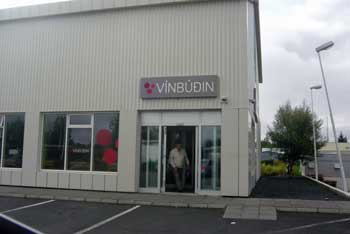
Here are some typical prices for alcohol:
- 330ml can of local beer: US$2 to US$3
- 500ml can of local beer: US$2.50 to US$4
- Cheapest bottle of wine: US$10 to US$12
- .7L bottle of off-brand vodka: US$30
- .7L bottle of mid-level brand vodka: US$50
Bottom line on doing Iceland as cheaply as possible
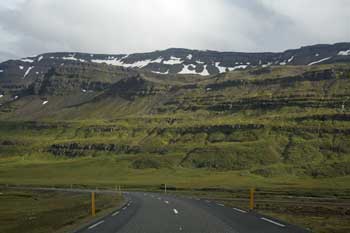
Whether you are going to get dorm beds or private rooms, as long as you will have your own wheels it’s worth renting a sleeping bag. You get the same bed and same services for about US$10 less per night, which will pay for a week’s rental of an indoor sleeping bag.
Unless you are a terrible driver or afraid to drive, it’s highly recommended to rent a car instead of trying to get around using buses. Once you get there you’ll see that having 100% flexibility with a car compared to almost no flexibility with a bus, is worth a LOT.
Instead of trying to be cheap with transportation, be cheap with self catering food and drinks for yourself. If you have at least a small group of people you’ll be able to have a party each evening in or near the shared kitchen of your guesthouse, and it will be more lively than any restaurant in town.

Hi Roger-
We will be visiting Iceland the last week of June for 7 nights. We have rented a cottage in Kjosarhreppur which will be home base. Our car for the week is a 4×4. We plan to do day trips, and may possibly stay overnight elsewhere if we venture to Jokulsarlon. I am wondering what your opinion is of the tour of the man-made ice tunnel in Langjokull versus the zodiac boat tour in Jokulsarlon. This time of year we can’t do an ice cave tour in Jokulsarlon, which is what I really wanted to do. Also, what would you highlight as the top 5 or so “must do” things while we are there? Any hikes,etc., would have to be fairly easy.
Thank you!
Marnie
Marnie,
The focus of my own trip and also of the research I’ve done was on seeing a wide variety of sights all over the island. The ice cave tour looks amazing from the photos and reviews, but I wasn’t even aware of it when I was there. I did drive to the Ice Lagoon where they do those Zodiac tours, but I just observed it all from the banks of the lagoon. The Ice Lagoon is absolutely one of the top highlights in all of Iceland and I was happy enough to see it from the shore. If I’d had a companion and maybe a bit more time, the Zodiac boats are probably even more enjoyable.
As for my Top 5, the Ice Lagoon is one. Mostly I drove the Ring Road and pulled off at every water fall and hot spring that had its own parking lot. Honestly, my favorite thing was just the ever-changing scenery as I drove around, with virtually no other cars on the road. It’s a volcanic island and there are many different types of ash fields and other natural phenomena that are different based on when the last eruption to reach that area was. And there are thousands of waterfalls that you’ll see as you just drive along. For me, the main sights that make up the “Golden Circle” were kind of disappointing, partly because they were all crowded while the attractions elsewhere were nearly empty. You’ll encounter many places to hike, most of which are mainly flat, although some require some climbing. It’s all very well organized and virtually all the main natural sights are free, with a little parking lot and well maintained paths at each one. I hope this helps. -Roger
Hi Roger
Great article. Best I have read as we research our trip. I also appreciate that you have kept this thread alive for 2 years. Really impressive and fun to share your love of travel and Iceland. Thank you!
We are considering a trip this summer (2017) for my wife and me and 2 early-teenage boys. We prefer using our feet instead of wheels and have done a lot of guided overnight hiking in the American west. We are researching a few trips and have heard from a KimKim agent about multi-day treks across Hornstrandir Nature Reserve and/or a multi day hike across Thorsmork area where you stay in huts each night.
A couple of questions. Do you know anything about these “hut to hut” hikes in the south? Are there similar hikes in Hornstrandor (e.g. huts?) or do you use tents or is it guest house to guest house. I read that Hornstrandor is very sparsly populated so I am guessing its tough to find guesthouses on the treking routes.
Finally, I have read a lot about the ring road but are more excited to get out and explore a few areas rather than try to see it all. With that in mind, if our trip will be 9 or 10 days, do you think there are areas – other than the 2 areas mentioned above, that we have to see along the ring road.
Thanks again. I look forward to your response
Best
David
David,
I’m glad you found the article interesting. Unfortunately I know pretty much nothing about hut to hut hikes in Iceland and that sort of thing. My own trip and most of my research has revolved around trying to see as many different types of sights in a short time, which can be best done by car or bus. That said, when I was there I did see people hiking long distances and cycling as well. I’m sure there is a much better source for advice on that aspect of your trip out there.
I didn’t get as far north as Hornstrandir, but I’m sure you are right about it being sparsely populated. In fact, the entire island outside the capital area is sparsely populated. You might drive through a village with 50 houses and then drive an hour to the next village with 50 houses. I’ve never seen anything like it, and it’s really nice partly for that reason.
If you have 9 or 10 days and don’t want to do the entire Ring Road, I think your idea of going to the northwest peninsula is a good one. But really, the best cluster of major sights is along the southern coast between Reykjavik and Hofn. The road there is also in good shape and it’s all paved. The Ring Road north of Hofn has some unpaved sections and there aren’t many major sights along the east coast. I wish I could be more help. Have a great trip. -Roger
Hi Roger,Im planning to go in the last week of June and Im planning a 8 day trip to Iceland. I have a few questions,
1)The prices of food,alcohol and fuel that are mentioned in the article above,are they the latest rates?
2)I plan to cover only the southern part of Iceland within a span of 4 days in a rented car. A 2WD,should I opt for gravel insurance even then? Considering the roads in that area may not be that bad.
3)What would be more suitable while traveling on the ring road,camping or staying in guesthouses? which option would be cheaper and which one would be better?
4)How is the weather in June? is it worth going in this season flying half way across the world? Thanks. Your article has been of great help.
Jugal,
1) Yes, I just updated those food, alcohol, and fuel prices in late 2016 based on information I received from people who had just visited. Fortunately, there isn’t much inflation in those things lately, although hotel prices have definitely gone up lately.
2) Along the southern coast you should be on paved roads about 99% of the time, so the gravel coverage is less critical. You’ll encounter some gravel roads, but they will mostly be driveways and short paths to parking lots, and you can drive very slowly over those without it being a problem. As I mentioned, on the Ring Road there are patches of 5 to 20 kilometers here and there of gravel roads, and your choices are driving at a crawl or driving at a normal speed and praying that you aren’t destroying the front of the rented car.
3) Camping would obviously require much more gear, and if you were able to bring all of that with you to Iceland then it would be cheaper to pay for camp sites or camp rough. But if you have to rent a tent and stove and all of that, it may not be cheaper and it would be quite a bit of work. I’d recommend guesthouses and perhaps the sleeping bag option where you can find it. The guesthouses in Iceland seem to be very social and enjoyable places with shared kitchens and all of that. They are sort of like small hostels where everyone has a basic, private room, and a shared bathroom, kitchen, and social space.
4) It’s somewhat chilly all year round in Iceland, but June is obviously one of the warmer months, and the sun barely sets as well. It’s absolutely worth going in June, and it might be the best month of the year because the weather is decent and the crowds are a bit lighter than July and August. Have a great trip. -Roger
Dear Harris,
I came across in this feeds and article from you and i find it very straightforward and informative thanks very much indeed. I am a Filipino living and working here in Abu Dabi (2 hours away from dubai) and i will be traveling to Iceland next week from March 24- 30 to celebrate my birthday with my German friend. I will be flying from Frankfurt airport and he will be flying a day earlier via Dusseldorf.
We have drafted itineraries and booked hotels but my only concern is we dont have any activities yet in Akureyri on March 28. Is there any tour companies you can suggest that offers excursions at very reasonable price? I checked via http://www.getyourguide.com however, it is a bit pricey i guess the snowmobiling.
And also, are the winter gears cheaper in iceland than the rest of europe? Like Winter shoes, waterproof jacket or raincoat etc.? Just like to know. I hope my questions are relevant to your article.
Appreciate to hear your valuable comments soon.
Have a great day
Thanks,
John
Tyrowe,
I mainly focused on seeing the natural sights all over Iceland and I didn’t do any paid activities like snowmobiling, so I’m not going to be much help on this. You are right that Getyourguide.com is a bit expensive, and you should get lower prices if you book once you get there. The service that Getyourguide.com offers is the ability to lock in an activity at a certain time before you go, which is often impossible from local operators any other way. And they do charge a bit of a premium for that.
As for prices of winter gear and clothes, I remember seeing many stores stocking those things on the main street in Reykjavik, but I didn’t check the prices. It’s an interesting question because most things in Iceland are quite expensive compared to elsewhere in Europe. But Iceland is also one of Europe’s top winter activity destinations, and they obviously sell a lot of gear there. My guess is that prices in Iceland are going to be competitive with elsewhere in Europe, and the selection seems to be good. I wish I had a more certain answer because that’s the exact sort of question that I enjoy researching and started this site to answer. Have a great trip. -Roger
Roger,
I admit to say that i have learned so much about this country just from this side and mostly from the comments people post below. I am sure many have made the same comment before me but it’s worth mentioning it again.
So here’s the thing. My wife and I are first time travellers in Iceland this upcoming August. We are travelling there for a week exactly the same time of the year as you did. We will rent a car but still haven’t figured out where from. We will drive the entire ring road and mainly stop at the following: Blue lagoon, Dettifoss, Dimmuborgir,Dyrholaey Arch, Geysir, Gullfoss Falls, Jokulsarlon, Krafla, Myvatn, Namafjall, Reynisdrangar, Reynisfjara black sand beach, Seljalandfos, Skogafoss, Vik and Akureyri. Please fill me up if there is anything I am missing. What type of car you think will do for the ring road? Should we choose a normal one or go for a 4×4 instead?
The other thing I was thinking is how to split my days there. First of all let me say that we are choosing to stay in hotels and guesthouses but it is likely to choose to stay more than one night at the same place due to the side attractions near by. I have written in one of the comments made by you that you chose to devide your trip to seven driving days each spending 3-5 hours on the road. Do you think this will be also convenient in our case?
The other thing is that we were wondering on how easy is to find a gas station in Iceland and how much should we spend for gas in total for the week.
What’more what are the chances in observing the northern lights in late August? What’the temperature like at this time of the year? I think I read somewhere that it can reach up to 20 degrees during day. What about at nights?
Thanks again for your time!
Harris,
Thank you for the kind words. It’s that sort of thing that makes running a website like this worthwhile. I’ll try to answer your questions in the order they came up…
The main options for where to rent a vehicle are from the main airport near Keflavík or from the agencies that operate out of an industrial park near central Reykjavik. I rented from Sixt from Reykjavik and returned my car to the airport for no extra fee. If you are going to spend a day or two in Reykjavik before the Ring Road then I recommend trying to do the same thing.
If you are going to mainly do the Ring Road and the key waterfalls and other top sights off the Ring Road, then a normal vehicle will be fine. You need a 4X4 if you want to take the dirt and gravel roads in the interior of the island, but almost the entire Ring Road is nicely paved and pretty much flat. I was also happy I got the gravel insurance that I mentioned, even though my car didn’t get damaged. The thing is, there are a few unpaved roads that you’ll be taking, and if you drive on them more than 10 MPH (16 KPH) or so, the gravel starts flying around and hitting the bottom of the car quite a bit. So with the insurance you can drive quicker and not worry, but without the insurance you’d have to crawl or be constantly worried about shredding the front of the car.
Of course, if you want to see some sights well off the Ring Road and up at elevation, you’ll need to rent a 4X4 or you won’t be covered at all.
The Blue Lagoon is really cool to see. It’s very close to the Keflavík Airport so it’s most efficient to see it on your way there or back. As far as the other attractions, I had a Lonely Planet guide with me and I checked it for the best sights on or near the Ring Road for each day I was there. So I saw all of the top sights, but I didn’t memorize all of the names, partly because most are hard to pronounce. It sounds like you are already much better prepared than most Iceland visitors, and I’m sure you’ll hit the best sights. The roads are so empty that you’ll have plenty of time to slow down and consider stopping any time you see a parking lot or sign for an attraction.
As far as dividing your time on the Ring Road, I was happy with my decision to do part of the road on each of my 7 days, and stay in a different guesthouse each night. I think that’s the way that most people do it, except for those who are taking 8 or more days for the Ring Road and are planning on focusing on a longer stop or two. In my case I did it clockwise and I made it two-thirds of the way around the Ring after 3 days of driving. I was still able to stop at every waterfall or other sight that I wanted. Most of them are literally right off the Ring Road, so a stop at a great waterfall might be just pulling into a parking lot for 15 minutes to look, and then on your way again. Then with my last 4 days I was able to focus in the more densely packed area along the southern coast. I could have stayed in Hofn or Vik for 2 nights if I wanted, and still been on track. It’s just that there are many more big sights along the southern coast than the rest of the Ring, so I was glad to go slower along there.
Also, the drive itself is perhaps the best part. As I’ve mentioned elsewhere, there were many times that I rounded a corner and saw something so stunning that I literally just stopped the car in the middle of the road for a few minutes to look and take photos. The traffic was so light in late August that I usually wouldn’t see another car. But if another car came, they could just go around me easily enough. I believe it’s become more popular in the last few years, but still you’ll be mostly alone.
Finding gas stations is easier than you might think. There are a few chains that cover the whole island, and they all have the exact same price, which is mentioned in the article above and updated recently. Obviously you have to pay attention and fill the tank when you get down to maybe a quarter of a tank, but it’s not like there are 100 kilometer stretches with no gas stations. The gas currently runs about US$7.50 a gallon, and most rental cars are quite fuel efficient. The Ring Road is 828 miles (1332 km) long, and you’ll add another 100 to 300 miles (150 to 450 km) for a few attractions that are off the road a bit. So figure maybe 1,000 miles or 1600 km. If you get a car that averages 30 MPG on the highway (it’s all highway), that’s 33 gallons or about US$250 for gas.
I’ve never heard of anyone seeing the Northern Lights in August, although I suppose it’s possible. The Iceland climate is warmer than most people would assume, and it stays above freezing at sea level all summer. It does get chilly at night, but August average lows are 46F/8C in Reykjavik, and most of the rest of the island is similar.
Let me know if you have other questions. -Roger
Roger,
Thank you for your detailed comments. Very descriptive as always! We will definitely get the gravel insurance for the car as it is something it will keep us calm throughout the journey. We are not sure though if heading to spots like Krafla and Detifoss on the north part will be fine using a normal car. I will look this further I am sure I will come up with an answer.
As for which direction to take maybe it’s wiser to go clockwise as the main spots are on the southern coast and we can save these for the end.
As for the weather it is clear that we need to bring some light jackets as well for the night. Thanks again for the valuable info! Very much appreciated!
Harris,
Yes, I did it clockwise for that reason and I’m very glad I did. Many of the blockbuster sights are along the southern coast, and if you save that until the end you’ll know how much time you have to spend there. Let me know if you have any other questions. -Roger
Thank you so much for all this info Roger. We are heading to Iceland end of April. I read that April is not a good time of year to go because scenery is not as nice. We are Canadians and here we see grass in April (not the greenest but we see it). Is it about the same in Iceland. I am imagining there would still be a lot of snow in higher land but still a good sign of ‘spring’ on lower ground. What is it like? Thank you.
p.s. we will be renting a car and going around the Ring Road for sure. As you suggested we plan on going clockwise. We will be staying 7 to 9 days, not sure yet.
Rachel,
I haven’t been to Iceland in April, but I still think I can answer the question. Interestingly, most of the scenery is volcanic output in one form or another and there are almost no trees at all. There are many natural grass fields and those might be brown in April (although I’m not sure), but most of the scenery should be the same. In other words, there just isn’t much there that can change in winter.
The interior of the island will be more snowy and icy in April, but the sea-level areas around the edges are warm enough that they should be dry in April. It’s a very popular time for Northern Lights tours, so I believe most of the scenery is accessible. You’d need to be even more careful driving on unpaved roads and especially at altitude, but really I think it’ll be very nice along the Ring Road and such. Have a great trip. -Roger
Hello Roger, you seem to be the true Iceland connaisseur and I enjoyed reading your posts. We are a family of 4 planning a trip around Iceland towards the end of June for 9 days. Would you recommend we book as we go if we want to stay in guesthouses or is it better to reserve in advance. Also, what are the overnight stops that you recommend along the way. I am thinking about spending the first night around Hella, then Hofn,Egilsstaoir,Akureyri,Vatnsdalur,Borgarnes and back to Reykjavik
Dominique,
Thanks. When I was in Iceland I did a ton of research and have researched many things since then, for the main purpose of being able to write about it and help others.
Before I went I was told that booking as you go each day is the norm, and in my experience that turned out to be by far the best way. I pretty much freestyled it around the Ring Road, starting clockwise and trying to get the longer driving days in first so I’d have more time to slow down on the more populated southern coast. Still, it’s really only the Reykjavik area that is “populated” as the towns of Vik and Hofn have just a few hundred and a couple thousand residents, respectively. In other words, the whole island is pretty much empty except for around Reykjavik.
On one hand, you could pre-plan all of your Ring Road stops and I’m sure you’d have a very good trip. But I was happy to decide where to stay part of the way into each day. The scenery is so amazing and varied, and some parts of the road are slower than others, that it was nice to be able to decide at noon and then call for a reservation in the town that I was sure I could reach at a reasonable hour. And as I’ve mentioned here before, most Iceland accommodation, particularly around the Ring Road seems to be set up this way with nearly all guests staying exactly one night and making a reservation on the day. Normally I really prefer to read all the reviews and book hotels in advance, but in Iceland many of the guesthouses aren’t offered online at all, and it’s the more expensive ones that can be booked online.
The online booking thing could be changing these days, however, as more guesthouses are using Airbnb and such. So it’s really hard to say for sure.
Your itinerary looks pretty good, although I think I’d devote more time to the south coast, as it’s the most dense with national parks and big sights. And Borgarnes to Reykjavik is only 70km and takes one hour. The views are nice, but I don’t believe there are any good stops along that road.
Since the south coast is the single most interesting area, you might also consider the plan I did by going clockwise and getting your long driving days in for the first few days, giving you more time to linger on the south coast. The views just from the car on the Ring Road are amazing those first few days, and there are plenty of little waterfalls and such to pull over to see, but they are quick to see, while the south coast has bigger parks and such.
As someone like myself who really enjoys pre-planning hotels and itineraries, going to Iceland to sort of “wing it” could seem stressful. But really it’ll work out great as long as you have a smart phone with a working SIM card. Let me know if you have any other questions. -Roger
This is great information, thank you! Where do you suggest I get a list of the guesthouses in Iceland? is there a tourist office at the airport?
Dominique,
Actually, there is a tourist office at the Reykjavik Airport, and they produce a booklet that they hand out to anyone who asks that is basically a catalogue of all guesthouses in Iceland. So visit that office and get your copy while still at the airport. There might also be an online version of it now. Have a great trip. -Roger
Hi Roger,
I am a student on a pretty slim budget ideally going this December so I am trying to save money for thinks like ice cave hiking and swimming in Silfra. I have been trying to read up on renting a car but being young and not a super experienced driver I have heard that it is incredibly expensive and also I am wondering if it is even recommended for someone who hasn’t been driving long? But I have also looked at the bus tours for both of those activities and know that they are more expensive than just meeting at the location. What do you recommend? By the way thank you for the tips on food and housing, glad to know I won’t be missing out on food if I buy cheap and do a hostel! Also, how long do you think is a good amount of time to stay in Iceland if I am just interested in those two things plus a chance at the Northern Lights while doing all the other touring in my free time? I was looking at going for 9-10 days but I am just not sure! Help!
thanks,
Veronica
Veronica,
My own Iceland experience was in late summer so I’m not sure what it’s like in December. However, I know that it’s become far more popular lately, especially with the Northern Lights tours. So I’m not sure how long you should stay, although I think you should stay as long as you can afford comfortably because Iceland is so amazing and everyone seems to love it.
As for renting a car, it’s something I rarely do myself if there are public transport options such as buses, but in Iceland I’m SO glad I rented a car. For one thing, everything is so spread out that there is no way a bus can take you to most of the little things you might want to see. In other words, I’m sure you’d have a very good time if you did it by bus, but if you can rent a car you’ll have a better time. Also, as you mention, the buses aren’t exactly cheap either. As for being an inexperienced driver, Iceland may be the easiest place to drive that I’ve ever been. If you rent a car at the airport then you can avoid Reykjavik completely and almost all roads on the island are empty. Even if you drive into Reykjavik or rent a car there, it’s a pretty easy drive of maybe 15 minutes and then you are out on the open road. The roads are mostly in very good condition, though there are some gravel roads that you will encounter.
Just keep in mind how little sunlight you’ll be getting each day, and assuming your plan works with that I’m sure you’ll have a wonderful time. I hope this helped and let me know if you have other questions. -Roger
Hi Roger,
Thanks for writing this! I’ve been researching online and this was by far the most detailed and easy to read review. I’m hoping you could help me with some quick questions though…
I’m actually traveling from Canada to Iceland with 2 friends at the end of April, we are going for about 10 days.
1. WE are going to be renting a car, so going to be staying at different hotels along the way, my question is, should be pre-book hotels or book when we get there as we go along?
2. The whole rent a sleeping bag thing i saw you mentioned previously, is there a specific place i should look into renting this? and are these clean to use?
3. How much would you say it would cost to rent the car for the week and is there a specific company you think we should look at?
4. The Ring Road, does it have places on the side of the road (shoulder) to stop and take in the sites or is this a risky move because we might end up holding up whatever traffic comes on this road?
5. IS the Ring road a local road, or is this something that only tourist use really to get around?
6. I want to check out the Hot Springs, as this is something to do there, would you recommend this?
7. Would you recommend eating at a restaurant at least once? or just stick to fast food throughout the whole trip to save money.I see what you’re saying about the supermarket but If i can avoid having to worry about cooking that would be great lol
8. Is this famous Ice Hotel along my way on the Ring Road? or do i have to go somewhere else to see this?
I think those are all my questions for now. Again i’m sorry for the list but i’m trying to plan and budget accordingly.
8.
Chandi,
I’m glad I can help. I’ll go through your questions in order…
1. Most of the people driving rented cars around the Ring Road are only staying one night in each place, so the whole system is well set up to find hotels on the day you’ll be staying. And in April, it’ll still be very early in the season so you’ll have no problem finding rooms. The cheaper places tend to NOT be listed for online booking.
2. There is a link in the article above to a place in downtown Reykjavik that rents sleeping bags exactly for this purpose. They are reputable and I’m sure they clean the bags between each rental. Iceland in general is very well organized for things like this.
3. I ran some rental price tests and they are in the article above. But in April you could get an even better deal. The base price comes with regular insurance (by law), but they will try to sell you a policy that covers even the deductible when you get there. Consider the gravel coverage if you are doing the Ring Road because you’ll be driving off pavement at times and the rocks really do fly around if you are going more than a crawl. Just go to kayak.com or another site like that to check rental rates for your dates.
4. I did the Ring Road in late August, which is far busier than April, and the most amazing thing to me was that once I got out of the Reykjavik area, I was almost alone. There were MANY times where I literally stopped my car in the lane of traffic to look around and take photos, and then drove on. Sometimes it was 10 or 20 minutes before I’d see another car. So don’t worry about that at all. There are shoulders in places and other pull-outs in scenic spots. But the traffic is so light that it’s not dangerous at all during daylight hours.
5. The Ring Road is more or less a state highway and it’s in very good condition almost all the way around. It’s also used for local traffic for people to get from one village to the other. But as mentioned, there are so few people in Iceland that you’ll barely see any cars once outside of the southwest corner of the island.
6. There are quite a few hot springs in Iceland and you should check a couple out. The namesake of the word “geyser” is called Geysir and it’s part of the “Golden Circle” of sights near Reykjavik. It’s far more crowded than the others, but it’s still worth a look. You’ll come across several others as you do the Ring Road, as long as you have a guidebook or something like that with you.
7. I ate at a couple restaurants in my 9 days there and none of them was special. Iceland is NOT a foodie destination and the local specialties are barely palatable to outsiders. So really you’d be missing almost nothing if you just did supermarkets and fast food.
8. I’m not aware of an ice hotel in Iceland, and Googling just now didn’t show one. The famous ones I’m aware of are in Sweden and Finland. If Iceland DOES have an ice hotel, I’d bet that it’s near Reykjavik or at least near the Ring Road.
No problem with the questions and I enjoy this topic a lot. Let me know if anything else comes up. -Roger
Hi Roger, this is hands down the best, most clear and up to date article ive found on Iceland. I reside and work in Dubai and i’m planning a 10-day trip to Iceland this May.
I just wanted to know if I can drive around Iceland on my Dubai Driving License or if i required an International Driving Permit? Also, there are no direct flights to Reykjavic from Dubai. Would you recommend Denmark as the closest stopover to transit through to Iceland? My questions may sound VERY amateur’ish but hey im a newbie.
Looking forward to hear from you.
Saad
Dubai,
UAE.
Saad,
Thank you for the kind words. I am quite a fan of Dubai myself. And your questions are not amateurish at all.
On the driver’s license thing, it is a policy for each company. I used my US license at Sixt and that was fine. Iceland gets a very international crowd, but I’m not sure if a UAE license will be accepted at all companies. Check for the best rate and then check the policy at that company.
As far as which place to stop on the way, I’d just check for the whole flight from Dubai to Reykjavik and then see what the fares are like with the different airports. The shortest flights would probably include a stop in London or maybe Manchester. Norwegian Air has very good fares and they are good for flights like this. If you were going to stay one or more nights in the stopover city then that’s a different question. London would be great, although you have to factor airport transportation into the plan because it can be expensive or time consuming depending on the airports.
Copenhagen is also right on the way if you get a good fare through there. Copenhagen is also a wonderful city to explore for a day. You might also get a good fare though Oslo, which is fine for a change of planes but the city itself isn’t very interesting so it may not be worth a day. I hope this helps a bit. Let me know if you have any other questions I can help with. -Roger